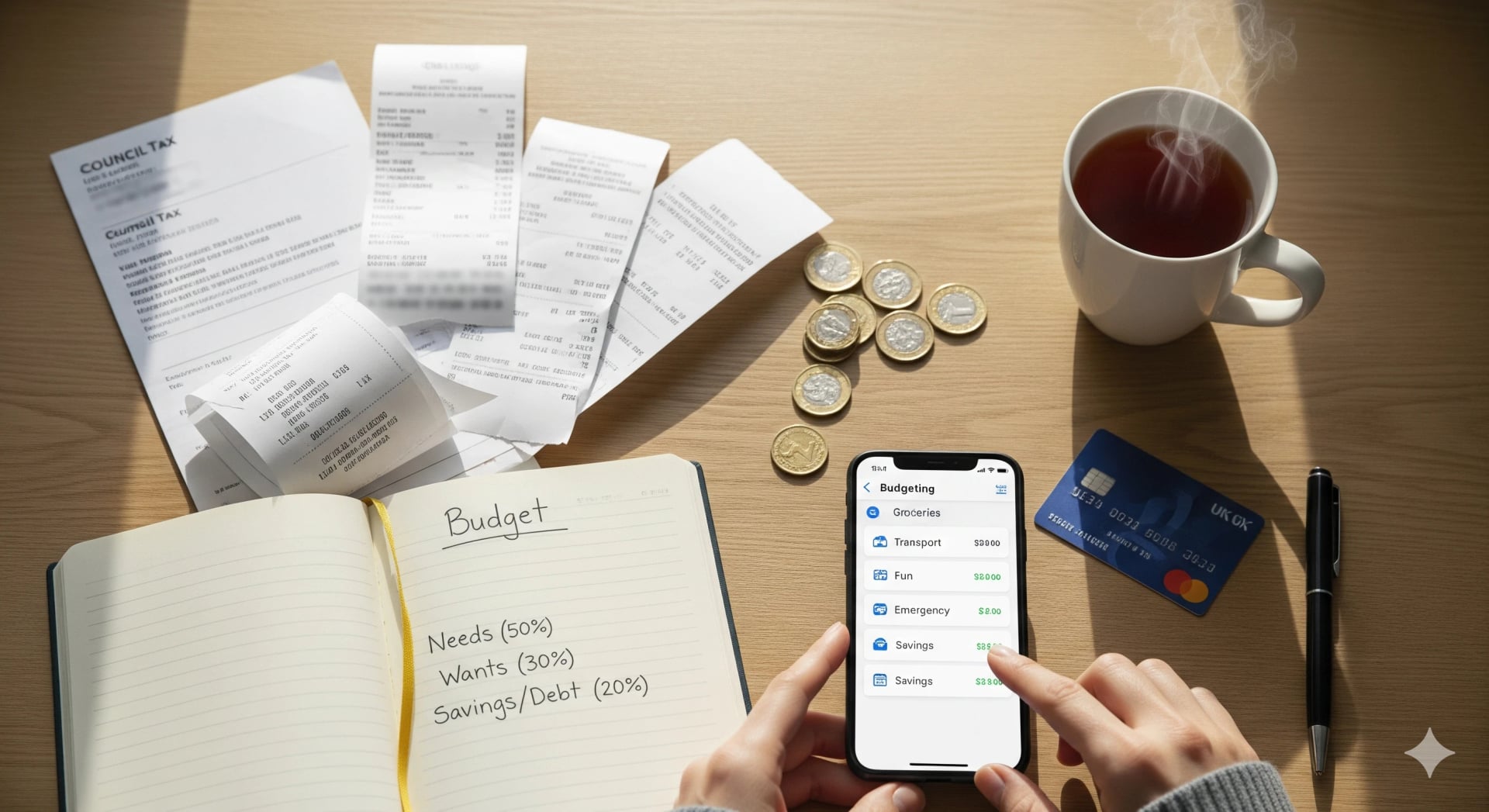Beyond Spreadsheets: The Modern Personal Finance Guide to a Budget You'll Actually Stick To
Building a budget shouldn't feel like doing your tax return. You don't need a giant spreadsheet or a finance degree — just a simple, repeatable plan that fits real UK life. This guide cuts the faff and shows you how to create a personal finance budget you'll actually keep up with, even when payday changes, bills wobble, or the boiler acts up.

Why most budgets fail (and how to fix it)
Budgets usually break because they're too complex, too strict, or too vague. The fix is to make your plan lightweight and flexible. Focus on clarity: what money comes in, what must go out, and what's left for goals and fun. If you're brand‑new to organising your money, start with our money management for beginners guide and build from there.
- Keep it simple: a handful of categories beats 40 rows of micro‑tracking.
- Automate the boring bits (bills, savings) and track the rest weekly.
- Align your budget to your goals — if you're not sure what those are yet, see setting financial goals.
Pick a method that suits your brain
There's no one “best” method — only the one you'll actually use. Try one of these for a month and adjust:
50/30/20 (flexible favourite)
50% needs (rent, utilities, council tax, food, transport), 30% wants, 20% saving/debt. It's a great starter because you can bend the ratios to your reality in the UK — especially if housing eats more than 50%.
Zero‑based budgeting (maximum control)
Give every pound a job before the month begins. Perfect if you like detail and want to see exactly where your money goes.
Digital “envelopes” (pots you can see)
Create separate pots (groceries, travel, fun, emergencies). When a pot is empty, you pause. This is one of the easiest ways to control impulse spending.
Your 7‑day quick‑start plan
No spreadsheets required — just notes on your phone and your banking app.
- List essentials: rent/mortgage, utilities, council tax, transport, food, and any minimum debt payments.
- Track every spend for one week (takeaways, top‑ups, subscriptions). You'll spot quick wins.
- Set up a small standing order on payday to a separate savings pot (even £10–£25). Pay yourself first.
- Choose one budgeting method (above) and set simple limits for wants (e.g., “£60 for eating out”).
- If you carry balances, consider tools that reduce interest while you repay. Learn the basics of credit card interest and APR and whether a 0% intro APR period could help you breathe while you pay things down. For larger planned costs, review UK personal loans carefully for terms and eligibility.
- Calendar a 15‑minute weekly “money check‑in” to adjust pots and spot leaks.
- Keep it kind: if you overspend in one pot, trim another. Progress over perfection.
Make it stick: habits, guardrails, and momentum
- Unsubscribe ruthlessly: review subscriptions and tariffs each quarter.
- Automate essentials and savings; track “wants” weekly, not daily.
- Protect your overall financial health — if debt is weighing you down, see how to get out of debt.
- Keep learning — browse more guides in Personal Finance.
The goal isn't a perfect spreadsheet; it's confidence. Keep your system lightweight, adjust when life shifts, and celebrate the small wins that compound over time.